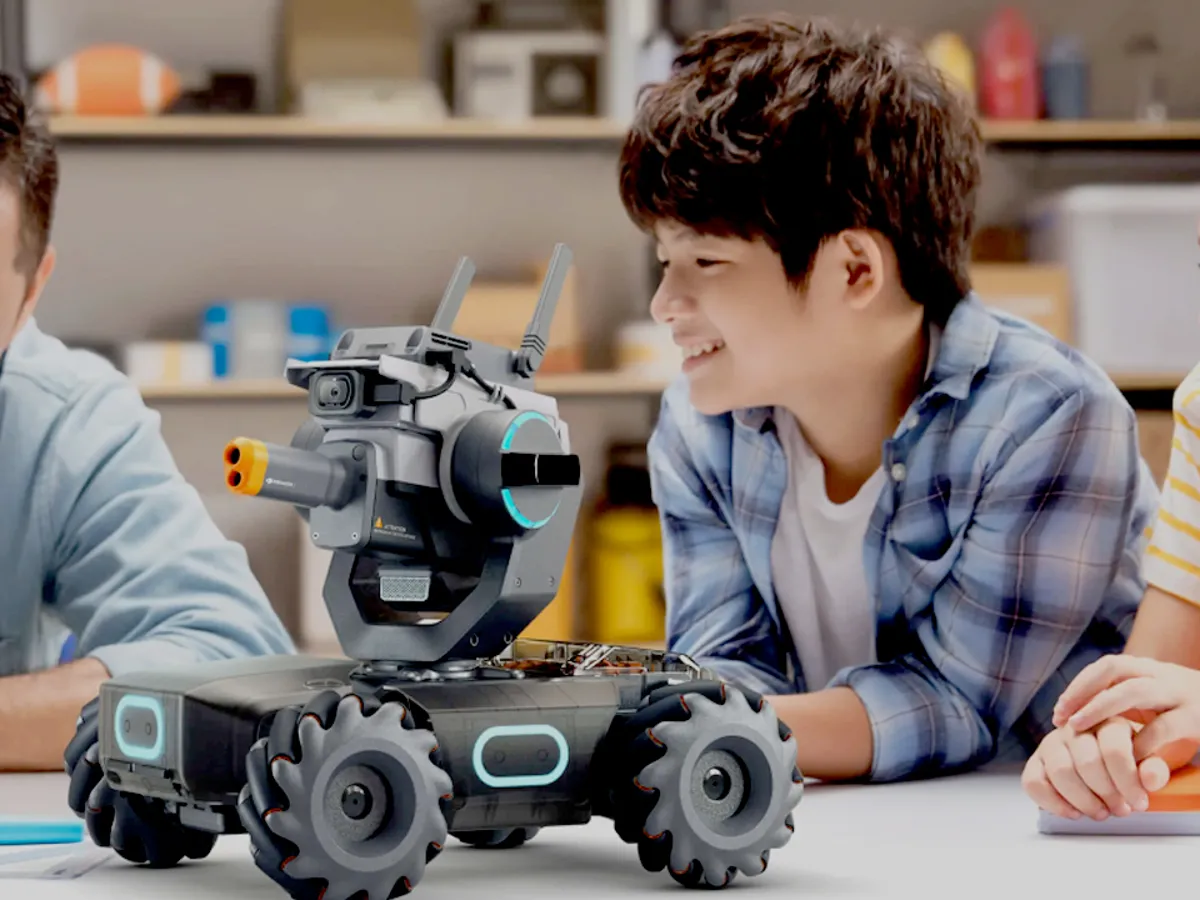Robot Toys: From Beeps and Boops to Budding Engineers
The world of robot toys has come a long way from the tin wind-up kind. Today’s robots are marvels of engineering, packed with features that can spark a child’s imagination, nurture creativity, and even introduce them to the fascinating world of robotics and STEM learning.
Whether you’re looking for a playful companion, an educational tool, or something in between, there’s a robot toy out there to capture your child’s interest. This article explores the different types of robot toys available, their potential benefits, and how to choose the right one for your child.
A Range of Robotic Companions
The world of robot toys offers a diverse range of options, each with its unique features and functionalities. Here’s a glimpse into some popular categories:
-
Remote-Controlled Robots: These classic robot toys allow children to take control, using a remote to navigate the robot and perform actions. They come in various shapes and sizes, from simple car-shaped bots to more complex humanoids.
-
Interactive Robots: These robots take things a step further by engaging with children through voice commands, touch sensors, and even facial recognition. They can respond to questions, sing songs, and tell stories, making playtime more interactive and engaging.
-
Coding Robots: These robots bridge the gap between play and learning. They can be programmed using simple coding languages or block-based programming, introducing children to the fundamentals of coding in a fun and interactive way.
-
Educational Robots: Designed specifically for educational purposes, these robots often come with curriculum-aligned activities and challenges. They can help children develop problem-solving skills, critical thinking, and an understanding of STEM concepts.
The Potential Benefits of Robot Toys
Robot toys are more than just fun companions. Here are some potential benefits they offer:
-
Enhanced Cognitive Development: Robots can stimulate a child’s cognitive development by encouraging problem-solving, critical thinking, and spatial reasoning skills. Coding robots take this a step further by introducing basic coding concepts, promoting logical thinking and computational skills.
-
Boosted Creativity and Imagination: From role-playing with interactive robots to creating imaginary adventures with remote-controlled ones, robot toys can spark a child’s imagination and inspire creative storytelling.
-
Improved Social Skills: Interactive robots can help children develop social skills through communication and interaction. These robots can respond to questions and prompts, encouraging children to take turns, share, and express themselves.
-
Introduction to STEM Learning: Robots can be a gateway to the exciting world of science, technology, engineering, and math (STEM). Coding robots and educational robots, in particular, can introduce children to basic programming concepts, robotics principles, and even scientific exploration.
Choosing the Right Robot Toy

With so many robot toys on the market, selecting the right one for your child can feel overwhelming. Here are some factors to consider:
-
Age and Developmental Stage: Consider your child’s age and developmental abilities. Younger children might enjoy simpler remote-controlled robots, while older children might benefit from more complex coding or educational robots.
-
Interests and Preferences: What sparks your child’s curiosity? Do they love animals? Look for robots with animal themes. Are they fascinated by space? A space exploration robot might be a perfect fit.
-
Learning Goals: Are you hoping to introduce your child to coding? Opt for a coding robot. Looking for something to boost social skills? An interactive robot might be the answer.
-
Features and Functionality: Consider the features that are important to you. Does the robot have voice recognition? Does it come with educational apps or activities?
-
Durability and Safety: Choose a robot toy made from high-quality materials that can withstand playtime wear and tear. Ensure it meets safety standards and is appropriate for your child’s age.
The Future of Robot Toys
The captivating realm of robot toys is on a continuous trajectory of evolution. As advancements in technology accelerate, we can anticipate a future brimming with even more sophisticated robots boasting features that push the boundaries of what’s possible. Let’s peer into the crystal ball and explore some of the exciting prospects that await:
The Rise of Artificial Intelligence (AI):
-
Imagine a robot toy that not only responds to commands but also learns and adapts to your child’s preferences over time. This future might not be far-fetched. AI integration in robot toys has the potential to create truly personalized experiences. An AI-powered robot toy could learn your child’s favorite games, stories, and even adapt its difficulty level to match their growing skills. This personalized approach to play can enhance engagement and make learning even more enjoyable.
Enhanced Emotional Intelligence:
-
The robots of tomorrow might extend beyond programmed responses to develop a more nuanced understanding of human emotions. Imagine a robot that can recognize a child’s feelings and respond with empathy and support. This emotional intelligence could prove invaluable in fostering a sense of connection and building a strong bond between child and robot companion.
Deeper Integration with Educational Platforms:
-
The future of robot toys might involve a seamless integration with educational platforms and learning curriculums. Imagine robots that can access and deliver age-appropriate educational content tailored to your child’s specific needs and interests. This synergy between play and learning could create a powerful educational tool, transforming playtime into an enriching and stimulating experience.
Hyper-Realistic Interactions:
- Advancements in robotics and material sciences might pave the way for robots with incredibly lifelike appearances and movements. Imagine a robot pet that feels furry and responds to touch just like a real animal. This level of realism could heighten a child’s sense of connection with the robot toy, making playtime even more immersive and engaging.
The Rise of Collaborative Play:
-
The future of robot toys might not be solely focused on individual play. Imagine robots designed specifically for collaborative play, encouraging children to work together to achieve common goals. These robots could be programmed with challenges that necessitate teamwork, communication, and problem-solving skills. This focus on collaborative play could foster valuable social skills and prepare children for success in a collaborative world.
The possibilities for the future of robot toys are truly limitless. As technology continues to evolve, we can expect to see robots that not only entertain and educate but also become cherished companions, trusted confidantes, and catalysts for a love of learning and innovation in children. The future of robot toys is bright, and it has the potential to revolutionize the way children learn, play, and interact with the world around them.
